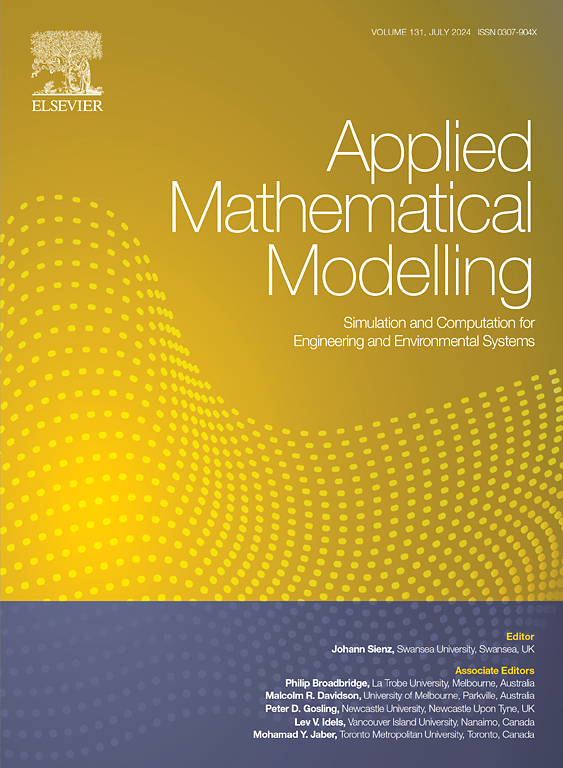Multiphysics simulation of slag melting in an induction furnace for sustainable silicon production
IF 4.4
2区 工程技术
Q1 ENGINEERING, MULTIDISCIPLINARY
引用次数: 0
Abstract
This work presents a multiphysics mathematical modelling and numerical simulation of the slag melting process in an induction furnace, with a focus on the production of sustainable silicon through the EU SisAl Pilot project. The mathematical model incorporates electromagnetic, thermal and hydrodynamic phenomena in a coupled axisymmetric framework to simulate the melting of a CaO-SiO2 slag, a key component in the aluminothermic reduction process for silicon production. The model addresses the challenge of heating the poorly electrically conductive slag using a graphite crucible and it also accounts for buoyancy-driven convection in the molten slag. The numerical simulations are validated against experimental data from pilot scale trials at Elkem's plant in Norway. In addition, sensitivity analyses are carried out considering both the progressive filling of the furnace and the inclusion of surface-to-surface radiation models.
可持续硅生产中感应炉熔渣多物理场模拟
这项工作介绍了感应炉熔渣过程的多物理场数学建模和数值模拟,重点是通过欧盟剑麻试点项目生产可持续硅。该数学模型将电磁、热学和流体力学现象纳入轴对称耦合框架中,模拟了铝热还原制硅过程中关键组分CaO-SiO2渣的熔化过程。该模型解决了使用石墨坩埚加热导电性差的炉渣的挑战,并且还考虑了熔渣中浮力驱动的对流。数值模拟与埃肯挪威工厂中试规模试验的实验数据进行了验证。此外,考虑了加热炉的递进填充和地对地辐射模型,进行了敏感性分析。
本文章由计算机程序翻译,如有差异,请以英文原文为准。
求助全文
约1分钟内获得全文
求助全文
来源期刊

Applied Mathematical Modelling
数学-工程:综合
CiteScore
9.80
自引率
8.00%
发文量
508
审稿时长
43 days
期刊介绍:
Applied Mathematical Modelling focuses on research related to the mathematical modelling of engineering and environmental processes, manufacturing, and industrial systems. A significant emerging area of research activity involves multiphysics processes, and contributions in this area are particularly encouraged.
This influential publication covers a wide spectrum of subjects including heat transfer, fluid mechanics, CFD, and transport phenomena; solid mechanics and mechanics of metals; electromagnets and MHD; reliability modelling and system optimization; finite volume, finite element, and boundary element procedures; modelling of inventory, industrial, manufacturing and logistics systems for viable decision making; civil engineering systems and structures; mineral and energy resources; relevant software engineering issues associated with CAD and CAE; and materials and metallurgical engineering.
Applied Mathematical Modelling is primarily interested in papers developing increased insights into real-world problems through novel mathematical modelling, novel applications or a combination of these. Papers employing existing numerical techniques must demonstrate sufficient novelty in the solution of practical problems. Papers on fuzzy logic in decision-making or purely financial mathematics are normally not considered. Research on fractional differential equations, bifurcation, and numerical methods needs to include practical examples. Population dynamics must solve realistic scenarios. Papers in the area of logistics and business modelling should demonstrate meaningful managerial insight. Submissions with no real-world application will not be considered.
 求助内容:
求助内容: 应助结果提醒方式:
应助结果提醒方式:


